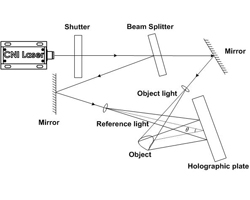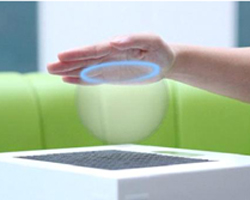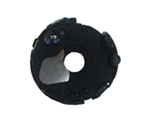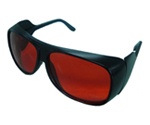When choosing materials for vehicle components, manufacturers must carefully balance durability, weight, aesthetics, and safety. This article explores the key factors in selecting materials for thermoformed vehicle parts, with a focus on how these materials perform under real-world conditions.
Impact Resistance and Durability
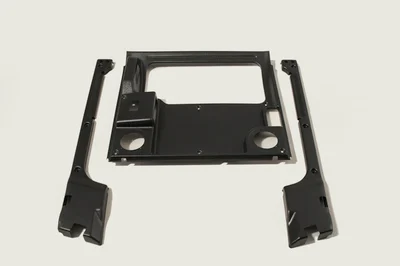 Vehicle components are constantly exposed to stress from various sources throughout their lifespan. From luggage and electronics to passenger contact, impacts are frequent. At the same time, materials must withstand repeated exposure to harsh cleaning chemicals. Vibrations, movement, and environmental exposure further challenge the performance of these parts.
Vehicle components are constantly exposed to stress from various sources throughout their lifespan. From luggage and electronics to passenger contact, impacts are frequent. At the same time, materials must withstand repeated exposure to harsh cleaning chemicals. Vibrations, movement, and environmental exposure further challenge the performance of these parts.
Historically, materials like Glass Reinforced Plastic (GRP/fiberglass) were used due to their stiffness. However, they tend to be brittle and prone to chipping or cracking. In contrast, modern thermoplastics such as KYDEX® offer superior impact resistance, especially in drop dart tests. These materials maintain their structural integrity even after repeated stress, making them ideal for high-demand applications.
Weight Considerations
With fuel efficiency remaining a top priority in vehicle design, material density plays a crucial role. Thermoplastics provide significant weight savings compared to traditional materials like steel or aluminum, offering better strength-to-weight ratios. This not only improves fuel economy but also reduces the vehicle's environmental footprint.
By reducing the overall mass of a vehicle, thermoplastics help improve performance and reduce energy consumption, making them an attractive choice for eco-conscious manufacturers.
Aesthetic Durability
Maintaining a clean and appealing look is essential for both interior and exterior vehicle components, especially in commercial and public transport settings. Through-colored thermoplastics resist fading and discoloration, while textured surfaces help mask minor scratches that accumulate over time. Unlike painted metals or laminates, there’s no risk of peeling or chipping, ensuring long-term visual appeal.
These materials come in a wide range of colors, patterns, and textures, including woodgrain and metallic finishes, offering designers flexibility without sacrificing durability.
Interior Components
Interior parts such as seatbacks, tray tables, and wall panels require materials that meet strict flame retardant standards while providing excellent impact resistance. These components must endure frequent cleaning and maintain their appearance over time.
Weight is also a major consideration for interior parts, as reducing their mass can significantly contribute to the vehicle’s overall efficiency.
Exterior Components
Exterior vehicle parts face even more extreme conditions, requiring materials that can withstand UV exposure, road chemicals, and harsh weather. These components need to maintain their appearance and structural integrity in abrasive environments.
UV stability and corrosion resistance are essential for exterior use, making material selection a critical step in the design process.
Fabrication Advantages
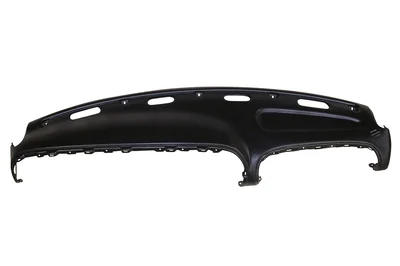 Modern thermoplastics bring several advantages to the manufacturing process. They can be easily thermoformed into complex shapes, with lower tooling costs compared to traditional metal forming methods. This allows for efficient production of large parts without compromising quality or detail.
Modern thermoplastics bring several advantages to the manufacturing process. They can be easily thermoformed into complex shapes, with lower tooling costs compared to traditional metal forming methods. This allows for efficient production of large parts without compromising quality or detail.
Thermoplastics also eliminate the need for pre-drying before forming, reduce cycle times, and operate at lower temperatures. Post-forming processes, such as trimming, can be done using basic automation or even standard woodworking tools, simplifying the workflow.
Customization Options
Material selection should take into account available customization options to meet specific design needs. Modern thermoplastic manufacturers offer a wide range of standard colors and textures, with custom color options available at reasonable minimum orders. Surface textures can be tailored to achieve both aesthetic and functional goals.
Additionally, reinforcing features can be incorporated during the forming process, adding another level of design flexibility and performance enhancement.
Safety and Compliance
Different transportation sectors have specific regulatory requirements that influence material choices. For example, aerospace applications must comply with FAR25.853 standards, while mass transit vehicles follow NFPA 130 guidelines. Automotive components must meet FMVSS 302 requirements. Across all industries, flame resistance and smoke toxicity are key factors in material approval.
Modern thermoplastics offer clear advantages over traditional materials in terms of durability, impact resistance, and weight savings. Their ability to maintain aesthetics over time, combined with ease of fabrication and broad customization options, makes them a strong choice for many vehicle applications.
While traditional materials like metals and GRP still have their place, thermoplastics provide a well-balanced solution that meets performance, design, and efficiency demands. As vehicle design continues to evolve, the use of advanced thermoplastics is likely to grow, driven by their versatility and compliance with industry standards.
Holography Laser
Holography is divided into two processes which are recording and reproduction,the interference fringes is generated on the holographic plate through the superposition between the reference light and the reflected light during the recording. Then, after the holographic plate is processed in the darkroom, an image exactly same to the original object will be reproduced from the interference pattern on the photosensitive sheet by diffraction. Compared with ordinary photographic, Holography not only records the amplitude of light field of the object, but also records the relative phase of the reflected light waves. Holography is widely used in holographic microscopy, holographic security, data storage, deformation measurement, holographic interferometry and etc.
â– High reliability single longitudinal mode lasers ( coherence length >50m )
â– Easy to install and maintain. Relevant components can be provided
â– Customized solution can be provided upon request
Wavelengths: 360nm, 405nm, 457nm, 473nm, 532nm, 556 nm, 561 nm, 589 nm, 633 nm, 656nm, 660nm, 671nm, 1064nm,
1342nm, 1550nm, etc. Multi-wavelengths system is also available on request.
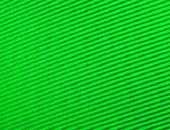
|
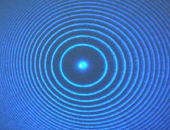
|
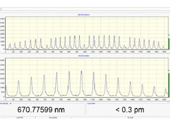
|
Interference fringes
|
Etalon interference ring
|
Wavelength and linewidth test
|
|
Research achievement of CNI laser Optogenetics from customers
|
(1) Three-dimensional holographic photostimulation of the dendritic arbor
(J. Neural Eng. 8 046002; doi:10.1088/1741-2560/8/4/046002) (CNI-405nm)
(2) Two-wavelength exposure enhancement in holographic data storage of spirooxazine-doped polymers
(Optics Communications Vol. 338, 1 March 2015, Pages 269–276) (CNI-405nm)
(3) Depth resolved hyperspectral imaging Spectrometer based on structured light illumination and Fourier
transform interferometry (Biomedical Optics Express, Vol. 5, Issue 10, pp. 3494-3507 (2014)) ( CNI-473nm)
(4) Optical magnetic imaging of living cells (Nature 496, 486–489 (25 April 2013)doi:10.1038/nature12072) (CNI- 532nm)
(5) Multi-Wavelength Laser sensor for intruder detection and discrimination
(Optics and Lasers in Engineering Vol. 50, Issue 2, Pages 176–181) (CNI-532nm)
(6) Optical observation of shock waves and cavitation bubbles in high intensity laser-induced shock processes
(Applied Optics, Vol. 48, Issue 19, pp. 3671-3680 (2009)) (CNI-532nnm)
(7) Microscope spectrometer for light scattering investigations (Applied Optics, Vol. 49, Issue 22, pp. 4193-4201 (2010)) ( CNI-671nm/532nm)
Holography Laser,Hologram Laser Projector,Uv Laser Pointer,Single Longitudinal Mode Laser
Changchun New Industries Optoelectronics Technology Co., Ltd. , https://www.cnioptics.com
 Vehicle components are constantly exposed to stress from various sources throughout their lifespan. From luggage and electronics to passenger contact, impacts are frequent. At the same time, materials must withstand repeated exposure to harsh cleaning chemicals. Vibrations, movement, and environmental exposure further challenge the performance of these parts.
Vehicle components are constantly exposed to stress from various sources throughout their lifespan. From luggage and electronics to passenger contact, impacts are frequent. At the same time, materials must withstand repeated exposure to harsh cleaning chemicals. Vibrations, movement, and environmental exposure further challenge the performance of these parts. Modern thermoplastics bring several advantages to the manufacturing process. They can be easily thermoformed into complex shapes, with lower tooling costs compared to traditional metal forming methods. This allows for efficient production of large parts without compromising quality or detail.
Modern thermoplastics bring several advantages to the manufacturing process. They can be easily thermoformed into complex shapes, with lower tooling costs compared to traditional metal forming methods. This allows for efficient production of large parts without compromising quality or detail.